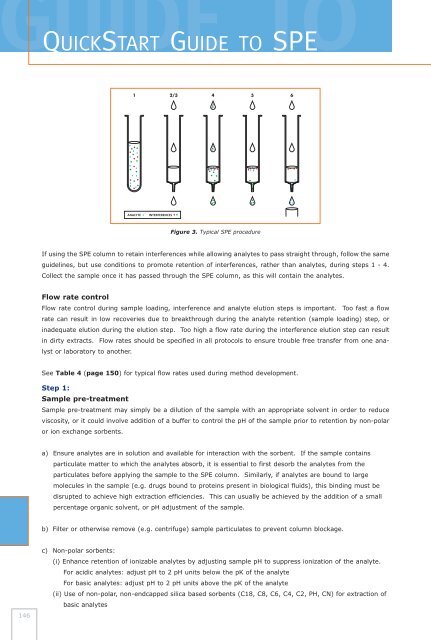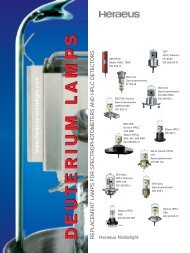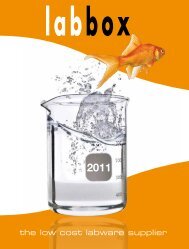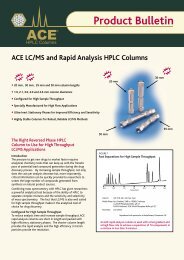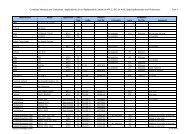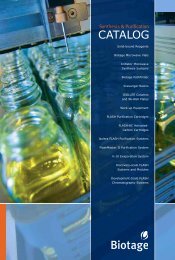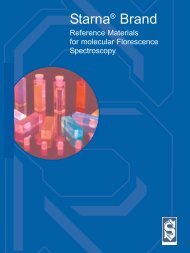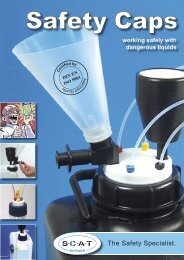PDF catalog - Teknolab AS
PDF catalog - Teknolab AS
PDF catalog - Teknolab AS
You also want an ePaper? Increase the reach of your titles
YUMPU automatically turns print PDFs into web optimized ePapers that Google loves.
TO<br />
QUICKSTART GUIDE TO SPE<br />
1 2/3 4 5 6<br />
ANALYTE<br />
INTERFERENCES<br />
Figure 3. Typical SPE procedure<br />
If using the SPE column to retain interferences while allowing analytes to pass straight through, follow the same<br />
guidelines, but use conditions to promote retention of interferences, rather than analytes, during steps 1 - 4.<br />
Collect the sample once it has passed through the SPE column, as this will contain the analytes.<br />
Flow rate control<br />
Flow rate control during sample loading, interference and analyte elution steps is important. Too fast a flow<br />
rate can result in low recoveries due to breakthrough during the analyte retention (sample loading) step, or<br />
inadequate elution during the elution step. Too high a flow rate during the interference elution step can result<br />
in dirty extracts. Flow rates should be specified in all protocols to ensure trouble free transfer from one analyst<br />
or laboratory to another.<br />
See Table 4 (page 150) for typical flow rates used during method development.<br />
Step 1:<br />
Sample pre-treatment<br />
Sample pre-treatment may simply be a dilution of the sample with an appropriate solvent in order to reduce<br />
viscosity, or it could involve addition of a buffer to control the pH of the sample prior to retention by non-polar<br />
or ion exchange sorbents.<br />
a) Ensure analytes are in solution and available for interaction with the sorbent. If the sample contains<br />
particulate matter to which the analytes absorb, it is essential to first desorb the analytes from the<br />
particulates before applying the sample to the SPE column. Similarly, if analytes are bound to large<br />
molecules in the sample (e.g. drugs bound to proteins present in biological fluids), this binding must be<br />
disrupted to achieve high extraction efficiencies. This can usually be achieved by the addition of a small<br />
percentage organic solvent, or pH adjustment of the sample.<br />
b) Filter or otherwise remove (e.g. centrifuge) sample particulates to prevent column blockage.<br />
146<br />
c) Non-polar sorbents:<br />
(i) Enhance retention of ionizable analytes by adjusting sample pH to suppress ionization of the analyte.<br />
For acidic analytes: adjust pH to 2 pH units below the pK of the analyte<br />
For basic analytes: adjust pH to 2 pH units above the pK of the analyte<br />
(ii) Use of non-polar, non-endcapped silica based sorbents (C18, C8, C6, C4, C2, PH, CN) for extraction of<br />
basic analytes


